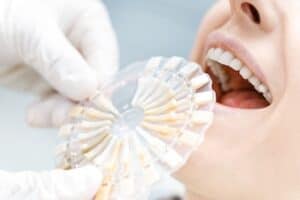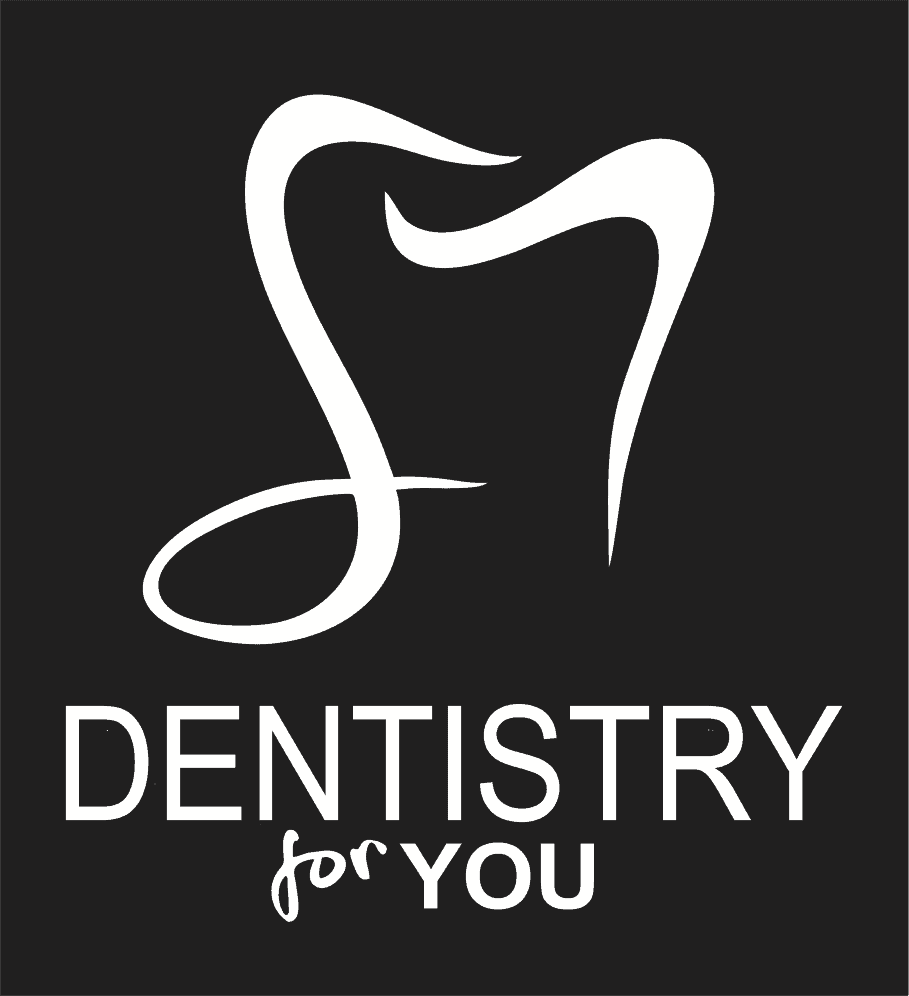
21 Apr What to Know About DIY Teeth Whitening: Is It Safe?
A bright, white smile is often associated with health and confidence, prompting many to seek teeth whitening solutions. While professional treatments are available, the convenience and affordability of DIY teeth whitening have made it a popular choice. However, it’s essential to understand the safety, effectiveness, and potential risks associated with at-home whitening methods.
Understanding DIY Teeth Whitening
DIY teeth whitening encompasses a range of over-the-counter products and natural remedies to lighten tooth color. Common methods include whitening strips, gels, toothpastes, trays, and natural substances like baking soda or activated charcoal. These products typically contain lower concentrations of bleaching agents than professional treatments, making them accessible for home use.
DIY Teeth Whitening Strips and Gels
Whitening strips and gels are some of the most commonly used DIY products. They typically contain peroxide-based bleaching agents and are applied directly to the teeth for a designated amount of time. While effective for some users, they can cause sensitivity if overused or applied improperly.
DIY Teeth Whitening Toothpastes
Whitening toothpastes work more by removing surface stains rather than changing the natural color of teeth. These toothpastes often contain mild abrasives or small amounts of hydrogen peroxide. They’re ideal for maintenance but generally don’t produce dramatic whitening results on their own.
Natural Remedies
Home-based remedies like baking soda, activated charcoal, or even oil pulling are popular due to their low cost and natural appeal. However, these methods often lack scientific backing and can be abrasive, risking enamel damage with prolonged use.
DIY Teeth Whitening Trays
Store-bought whitening trays offer a more customized approach than strips but still fall short of the fit provided by professional-grade trays. The bleaching solution is placed in the tray, which is then worn over the teeth. Poor fit can lead to uneven whitening and gum irritation.

Potential Risks of DIY Teeth Whitening
While DIY whitening can offer convenience and affordability, it’s not without risks. Improper use, overuse, or using low-quality products can lead to unwanted side effects that may impact your oral health over time. It’s important to weigh the benefits and potential drawbacks before starting any at-home whitening regimen.
Enamel Erosion
Some DIY methods, especially those involving acidic or abrasive substances, can erode the enamel – the outermost protective layer of your teeth. Enamel erosion is irreversible and can leave teeth vulnerable to sensitivity, staining, and decay.
For example, brushing with baking soda too frequently or applying lemon juice-based mixtures can wear away enamel due to their abrasive or acidic nature. Once enamel is lost, it cannot be restored, which is why using gentle and tested whitening methods is critical. If you’re unsure whether a method is too abrasive, consult your dentist before trying it.
Gum Irritation
Improper application of whitening agents can irritate or damage gum tissue. Symptoms of gum irritation include redness, swelling, tenderness, or even bleeding, especially if the bleaching solution spreads beyond the teeth and sits on soft tissues. This is a common issue with poorly fitted trays or careless application of gels and strips.
Some people may also have allergic reactions or heightened sensitivity to the active ingredients in over-the-counter products. Using a cotton swab or applying petroleum jelly to the gums before treatment may help protect sensitive areas, but precision and caution are key to avoiding discomfort.
Uneven Whitening
At-home treatments may result in inconsistent whitening, leading to uneven tooth coloration that can be difficult to fix. This can happen due to patchy application of gels or strips, variations in tooth surface texture, or pre-existing dental restorations like crowns or fillings that don’t respond to whitening agents.
These disparities often leave the smile looking blotchy or unnatural. In contrast, professional treatments use custom-fitted trays and controlled formulas to deliver even results tailored to your unique dental anatomy. If you’re noticing inconsistent results with DIY methods, a dental consultation may help determine a better solution.
Comparing Professional and DIY Teeth Whitening
Professional teeth whitening, conducted under the supervision of a dentist, offers several key advantages over at-home methods. While DIY options may seem more accessible and budget-friendly, professional treatments tend to deliver better, safer, and longer-lasting results.
Understanding the differences between the two can help you make an informed decision about which approach is right for your smile.
Effectiveness
One of the most noticeable differences between DIY and professional whitening is the level of effectiveness. Dentists have access to higher concentrations of bleaching agents, such as hydrogen peroxide or carbamide peroxide, that penetrate deeper into the tooth enamel to break down stains more thoroughly.
As a result, in-office treatments can often lighten teeth by several shades in just one visit, whereas at-home products may require several weeks of consistent use to see subtle improvements.
Additionally, professional whitening can address tougher stains caused by aging, medication, or long-term habits like coffee or wine consumption, which at-home methods may struggle to eliminate.
Safety
Safety is a top priority in any dental procedure, and professional whitening is no exception. Before starting treatment, a dentist will assess your overall oral health, checking for issues like cavities, gum disease, or enamel erosion that could be exacerbated by whitening.
This evaluation ensures that you’re a good candidate and helps prevent complications. During the whitening session, the dentist can also protect sensitive areas of your mouth, such as the gums and roots, and provide strategies to manage post-treatment sensitivity. This level of care reduces the risk of discomfort or damage often associated with unsupervised at-home treatments.
Customization
Professional whitening is not a one-size-fits-all solution – instead, it’s tailored to your unique dental profile and cosmetic goals. Dentists can consider factors such as your level of tooth sensitivity, the presence of dental restorations like crowns or veneers, and the natural shade of your teeth when planning your treatment.
Many professionals also create custom-fit whitening trays that ensure even distribution of the whitening gel and minimize contact with soft tissues, reducing the likelihood of gum irritation or uneven results. This personalized approach helps you achieve a brighter, more natural-looking smile safely and efficiently.

Best Practices for Safe Whitening
If you choose to pursue at-home whitening, consider the following precautions:
Consult a Dentist
Before beginning any at-home whitening routine, it’s important to consult your dentist. A dental professional can evaluate your oral health and determine whether whitening is safe and effective for your specific situation.
Conditions such as tooth decay, gum disease, or existing dental work like crowns and fillings may affect the outcome of whitening or increase your risk of complications. A quick consultation can also help identify the best product or approach based on your tooth sensitivity and whitening goals.
Follow Instructions
Always follow the manufacturer’s instructions when using over-the-counter whitening products. This includes adhering to the recommended frequency and duration of use.
Leaving products on for longer than advised won’t necessarily produce better results – in fact, it may damage your enamel or irritate your gums. Consistent but cautious use is key to avoiding negative side effects while still achieving noticeable improvements.
Monitor Sensitivity
Tooth and gum sensitivity is one of the most common side effects of whitening treatments. If you notice increased sensitivity or discomfort during or after whitening, stop using the product and consult your dentist.
Mild sensitivity may be temporary, but severe or persistent issues can indicate underlying dental problems or improper product use. Your dentist may suggest switching to a gentler formula or using desensitizing toothpaste to help manage symptoms.
Avoid Harmful Substances
Although DIY trends often promote natural whitening solutions like lemon juice, vinegar, or activated charcoal, many of these methods can do more harm than good. Acidic ingredients can erode enamel over time, making teeth more vulnerable to decay and sensitivity.
Abrasive substances may wear down the tooth’s surface, leading to uneven coloring and long-term damage. Stick to products that are dentist-approved and supported by scientific research for the safest results.
Final Thoughts
While DIY teeth whitening offers convenience and cost savings, it’s essential to approach it with caution. Understanding the potential risks and limitations can help you make informed decisions about your oral health. For optimal results and safety, consulting with a dental professional remains the best course of action.





Sorry, the comment form is closed at this time.